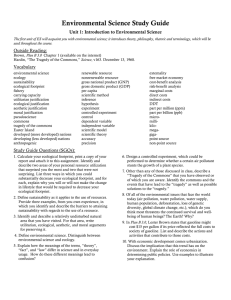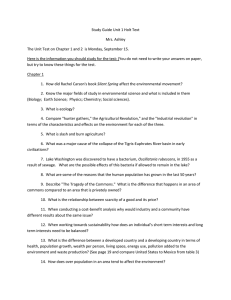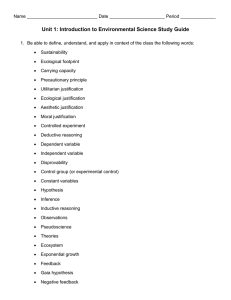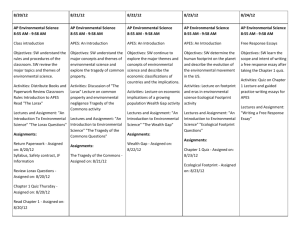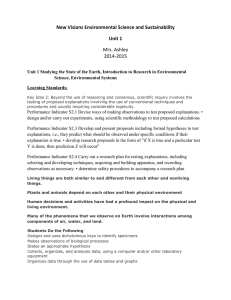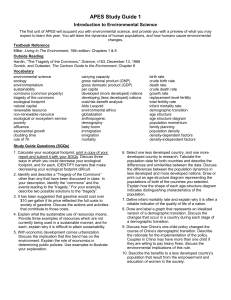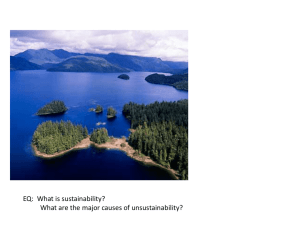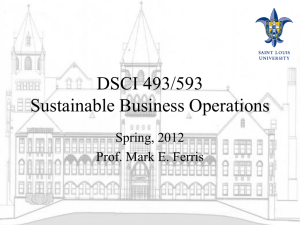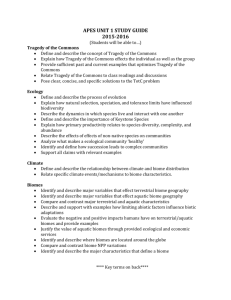APES Study Guide Unit 1: Introduction to Environmental Science
advertisement
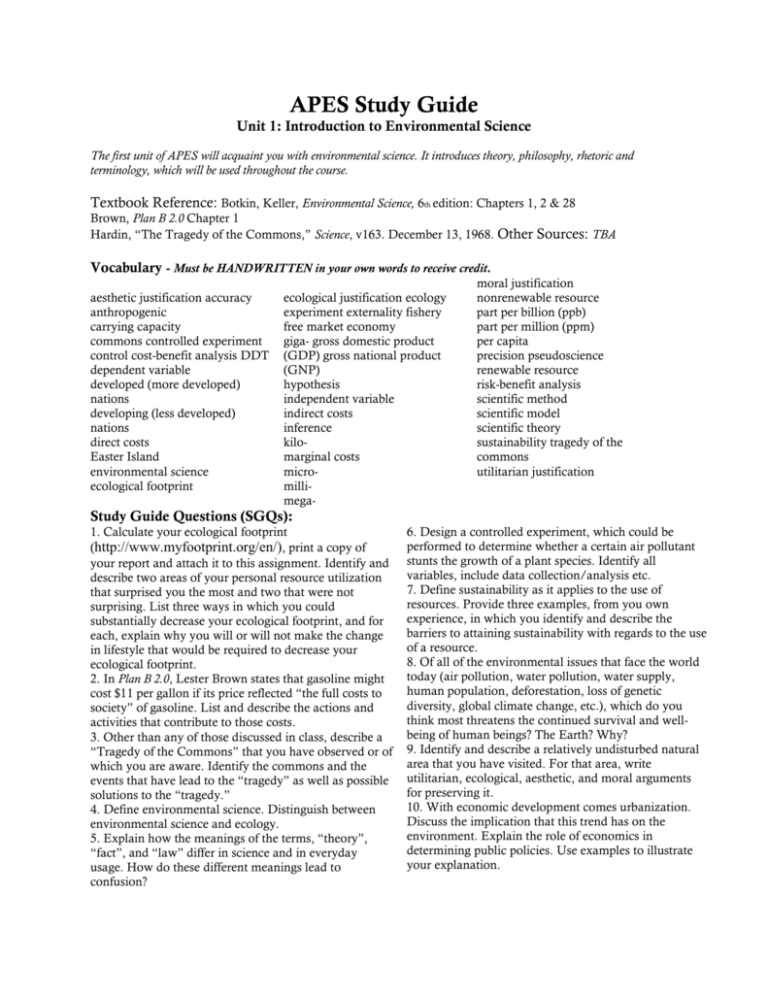
APES Study Guide Unit 1: Introduction to Environmental Science The first unit of APES will acquaint you with environmental science. It introduces theory, philosophy, rhetoric and terminology, which will be used throughout the course. Textbook Reference: Botkin, Keller, Environmental Science, 6th edition: Chapters 1, 2 & 28 Brown, Plan B 2.0 Chapter 1 Hardin, “The Tragedy of the Commons,” Science, v163. December 13, 1968. Other Sources: TBA Vocabulary - Must be HANDWRITTEN in your own words to receive credit. aesthetic justification accuracy anthropogenic carrying capacity commons controlled experiment control cost-benefit analysis DDT dependent variable developed (more developed) nations developing (less developed) nations direct costs Easter Island environmental science ecological footprint ecological justification ecology experiment externality fishery free market economy giga- gross domestic product (GDP) gross national product (GNP) hypothesis independent variable indirect costs inference kilomarginal costs micromillimega- moral justification nonrenewable resource part per billion (ppb) part per million (ppm) per capita precision pseudoscience renewable resource risk-benefit analysis scientific method scientific model scientific theory sustainability tragedy of the commons utilitarian justification Study Guide Questions (SGQs): 1. Calculate your ecological footprint (http://www.myfootprint.org/en/), print a copy of your report and attach it to this assignment. Identify and describe two areas of your personal resource utilization that surprised you the most and two that were not surprising. List three ways in which you could substantially decrease your ecological footprint, and for each, explain why you will or will not make the change in lifestyle that would be required to decrease your ecological footprint. 2. In Plan B 2.0, Lester Brown states that gasoline might cost $11 per gallon if its price reflected “the full costs to society” of gasoline. List and describe the actions and activities that contribute to those costs. 3. Other than any of those discussed in class, describe a “Tragedy of the Commons” that you have observed or of which you are aware. Identify the commons and the events that have lead to the “tragedy” as well as possible solutions to the “tragedy.” 4. Define environmental science. Distinguish between environmental science and ecology. 5. Explain how the meanings of the terms, “theory”, “fact”, and “law” differ in science and in everyday usage. How do these different meanings lead to confusion? 6. Design a controlled experiment, which could be performed to determine whether a certain air pollutant stunts the growth of a plant species. Identify all variables, include data collection/analysis etc. 7. Define sustainability as it applies to the use of resources. Provide three examples, from you own experience, in which you identify and describe the barriers to attaining sustainability with regards to the use of a resource. 8. Of all of the environmental issues that face the world today (air pollution, water pollution, water supply, human population, deforestation, loss of genetic diversity, global climate change, etc.), which do you think most threatens the continued survival and wellbeing of human beings? The Earth? Why? 9. Identify and describe a relatively undisturbed natural area that you have visited. For that area, write utilitarian, ecological, aesthetic, and moral arguments for preserving it. 10. With economic development comes urbanization. Discuss the implication that this trend has on the environment. Explain the role of economics in determining public policies. Use examples to illustrate your explanation.
